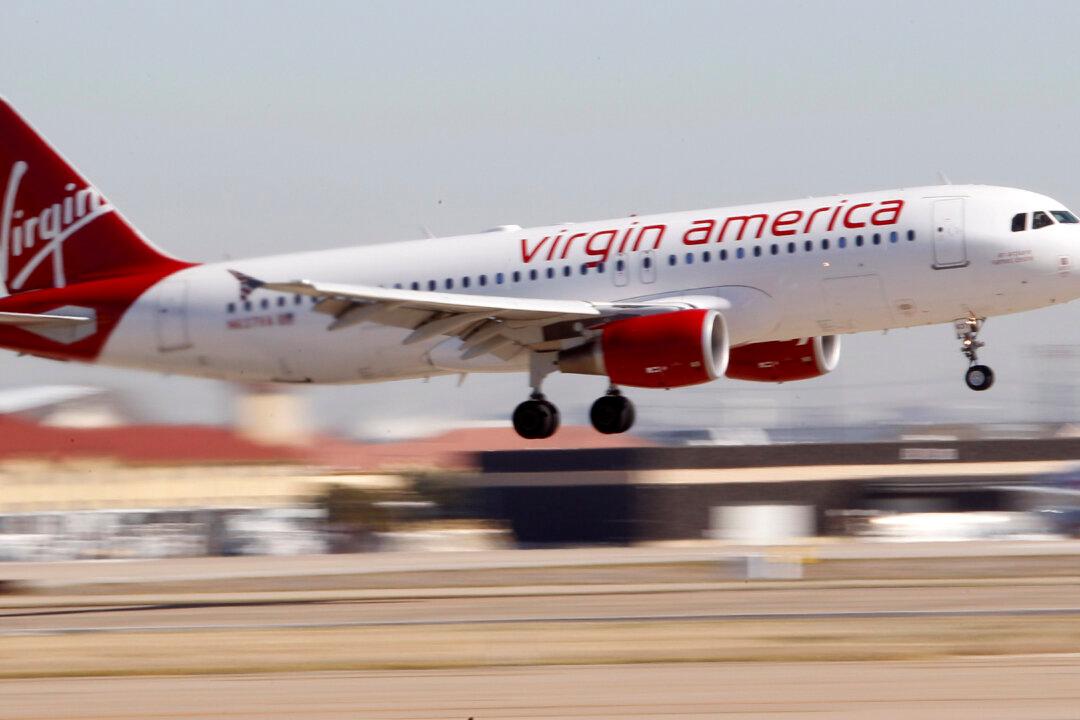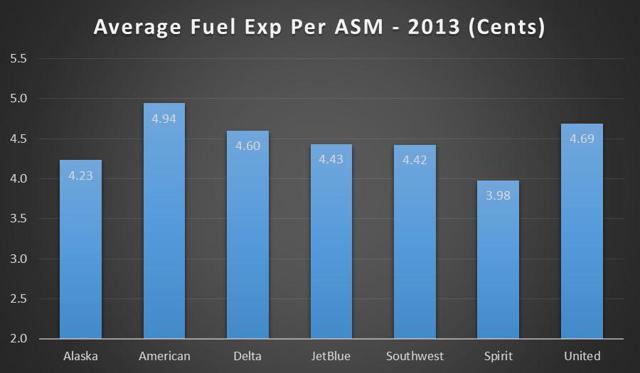When oil goes lower, so does aircraft fuel. Which airline wins? All of them do, but some will benefit more from the diving price of oil. There are many metrics for determining the effect of fuel cost on airlines, including percentage of operating expense, percentage of revenue, fuel consumed per available seat mile and fuel cost per available seat mile. In this article, I present fuel cost per available seat mile and fuel expense as a percentage of operating expense.
Trying to foresee the price of oil (and jet fuel) is a guessing game at best. Therefore, this article focuses on a comparison of several major airlines and assesses which has the most to gain when oil prices drop, but does not make specific predictions. The numbers below are based on 2013 fuel usage and expense.
Fuel Cost Per Available Seat Mile
The cost of fuel per available seat mile - FCA - is the cost of fuel used divided by the number of available seat miles (ASM). FCA is a function of the amount of fuel used per available seat and the cost of fuel, where the two are multiplied. The amount spent by airlines per gallon of fuel changes slightly depending on where they fly, which companies they contract with and, in the case of Delta Air Lines (NYSE:DAL), refinery ownership. Using FCA for comparison makes more sense than the raw amount of fuel per seat mile because FCA takes into account differences in how airlines purchase fuel.
This article was originally published on seekingalpha.com. Read the rest here.

